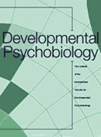Abstract:
Individual differences in impulsivity underlie a good deal of the risk taking that is observed during adolescence, and some of the most hazardous forms of this behavior are linked to impulsivity traits that are evident early in development. However, early interventions appear able to reduce the severity and impact of these traits by increasing control over behavior and persistence toward valued goals, such as educational achievement. One form of impulsivity, sensation seeking, rises dramatically during adolescence and increases risks to healthy development. However, a review of the evidence for the hypothesis that limitations in brain development during adolescence restrict the ability to control impulsivity suggests that any such limitations are subtle at best. Instead, it is argued that lack of experience with novel adult behavior poses a much greater risk to adolescents than structural deficits in brain maturation. Continued translational research will help to identify strategies that protect youth as they transition to adulthood.


